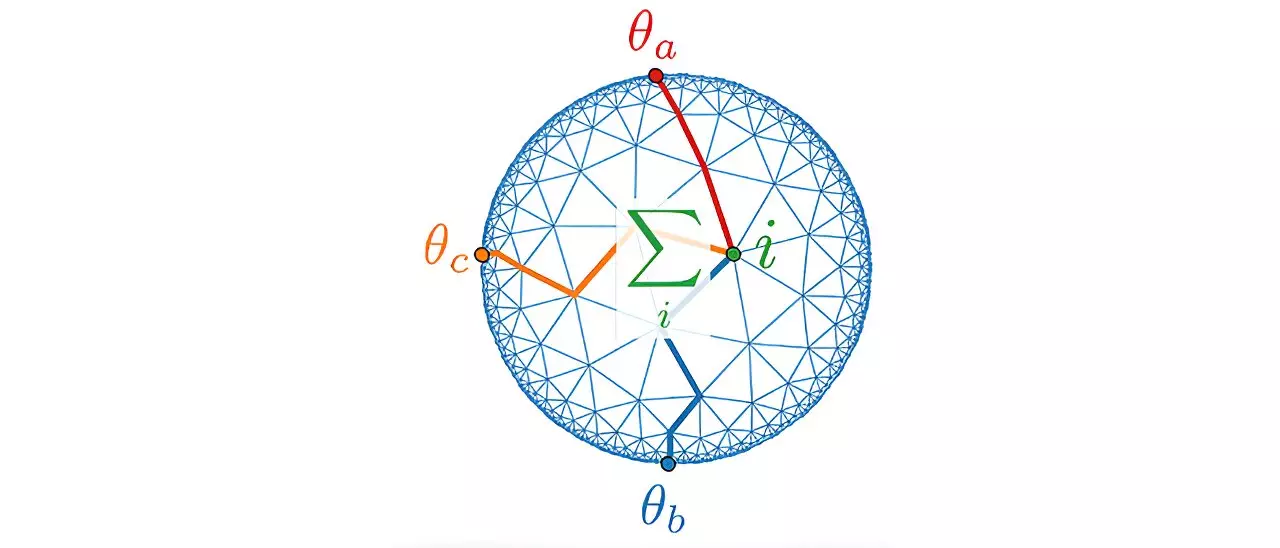For centuries, gravity has captivated the minds of physicists and astronomers alike. Established as a fundamental force in classical physics, it governs the motion of celestial bodies and dictates the ebb and flow of tides. However, while we have mastered gravity’s implications on a macroscopic level, its behavior at the quantum level remains an enigma. Recent advancements suggest that further understanding of gravity is crucial not only for comprehension of the cosmos but also for breakthroughs in technology and theoretical physics.
Professor Johanna Erdmenger, a distinguished figure in the field of theoretical physics at the University of Würzburg (JMU), highlights a fundamental truth within gravity’s intricacies: “To explain the Big Bang or the interior of black holes, we must delve into the quantum properties of gravity.” This statement points to a growing consensus among scientists: the theories that adequately describe gravity’s influence at large scales ultimately falter when confronted with the complexities inherent to the quantum realm.
One of the most intriguing theoretical frameworks developed to reconcile these disparate planes of gravity is the AdS/CFT correspondence. This innovative concept proposes that high-dimensional gravitational systems can be equivalently expressed through simpler quantum theories existing at their boundaries. The abbreviations stand for Anti-de-Sitter space and Conformal Field Theory, respectively—two terms that, while complex, signify a critical relationship between gravity and quantum mechanics.
Anti-de-Sitter space is notable for its unique geometric properties, curved inward in a manner reminiscent of a hyperbolic structure. Conversely, Conformal Field Theories embody quantum systems whose characteristics scale uniformly across distances. While these ideas may seem prohibitively intricate, Professor Erdmenger simplifies the concept by presenting it as a holographic model: “The correspondence likens the correlation between boundary dynamics and inner gravitational behaviors to a hologram generating a three-dimensional image from a two-dimensional source.”
This fascinating analogy frames the AdS/CFT correspondence not just as a theoretical pursuit but as an essential tool for grasping the gravitational phenomena experienced in quantum mechanics.
Despite its theoretical allure, one significant hurdle prevails—the need for experimental validation. Professor Erdmenger and her team recently achieved a milestone in this regard, developing a practical method to test the AdS/CFT correspondence experimentally. Their approach employs an intricate electrical circuit designed to simulate the behaviors of curved space-time. At various points in this circuit, the dynamics of electrical signals correspond to gravitational interactions expected at multiple locations in actual space-time.
This experimental setup has ramifications not only for theoretical physics but also for technological innovation. By validating the correspondence, the researchers have set the stage for potentially groundbreaking advancements in quantum technologies. As Erdmenger notes, “Our circuits offer a pathway to new technological applications.” The implications of this research extend beyond academic curiosity; they suggest that the induced curvature within the circuits could lead to improved signal transmission with diminished loss—a boon for quantum computing and information technologies.
The journey toward understanding quantum gravity is filled with challenges, yet it also harbors the promise of numerous rewards. By overcoming barriers that have long held back progress, researchers like Erdmenger are unlocking new realms of theoretical understanding and practical application. With plans to implement their experimental circuit design, the Würzburg team is poised to make substantial contributions not only to gravitational research but also to the wider field of technology.
As the quest for knowledge continues, the hope lies in bridging the gulf between theory and experiment, unraveling the deep connections between gravity and quantum physics. The future outcomes of this research may push the boundaries of our comprehension, opening doors to a sophisticated understanding of the universe’s fabric—an intricate weave of gravity where the quantum meets the cosmic.

